Surface Laptop 3 13.5 review: A delightful laptop that exceeds the conventional
USB Type-C, Intel 10th Gen and minor changes add up to a one-of-a-kind laptop experience with some kick
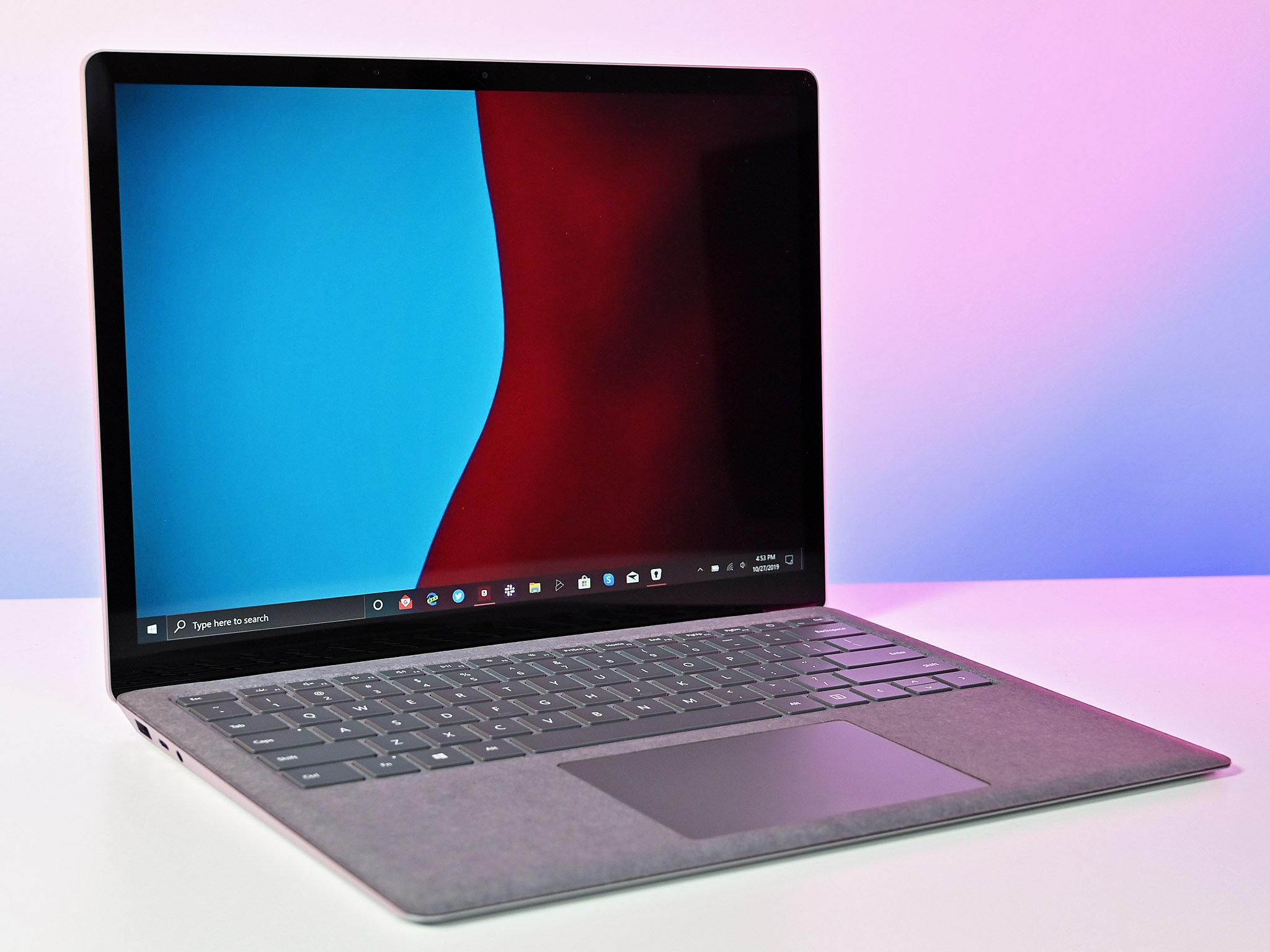

The Surface Laptop 3 15-inch featuring AMD has garnered a lot of press – some good, a lot not so good – but Microsoft is also offering smaller Surface Laptop 3 13.5-inch. Like the new Surface Pro 7, the Surface Laptop 3 13.5 is on the outside a minor refresh, but all those hardware changes add up to a marvelous experience.
I am unabashedly a fan of the Surface Laptop 13.5. But has Microsoft been able to convince me that the new Surface Laptop 3 is worth my time over the Surface Laptop 2, and redeem itself from the underwhelming 15-inch version? You bet it did.
When Surface Laptop 3 13.5 launched, it started at $1,000. Now, Microsoft has a newer Surface Laptop on the market, called the Surface Laptop 4, which also starts at $1,000. Surface Laptop 3 can likely be found for less these days, but if you need something smaller and cheaper, check out the new Surface Laptop Go.

From $977 at AmazonFrom $977Bottom line: The Surface Laptop 3 13.5 is a worthy follow-up to last year's model. While there are no massive changes, the new Intel 10th Gen processor, Instant On, faster SSD, Type-C 3.1 port, and huge trackpad make it even better than ever. Battery life is good, and things like Wi-Fi 6 help add some future-proofing. Users can save money and do a DIY upgrade of storage if they are willing.
Pros
- Gorgeous design and craftsmanship
- USB Type-C
- Instant On and good battery life
- Superb keyboard and trackpad
- Intel 10th Gen is excellent
- It is now serviceable
Cons
- No Thunderbolt 3
- No Dolby Vision or anti-glare display
Just the facts
Surface Laptop 3 13.5 What's new for 2019
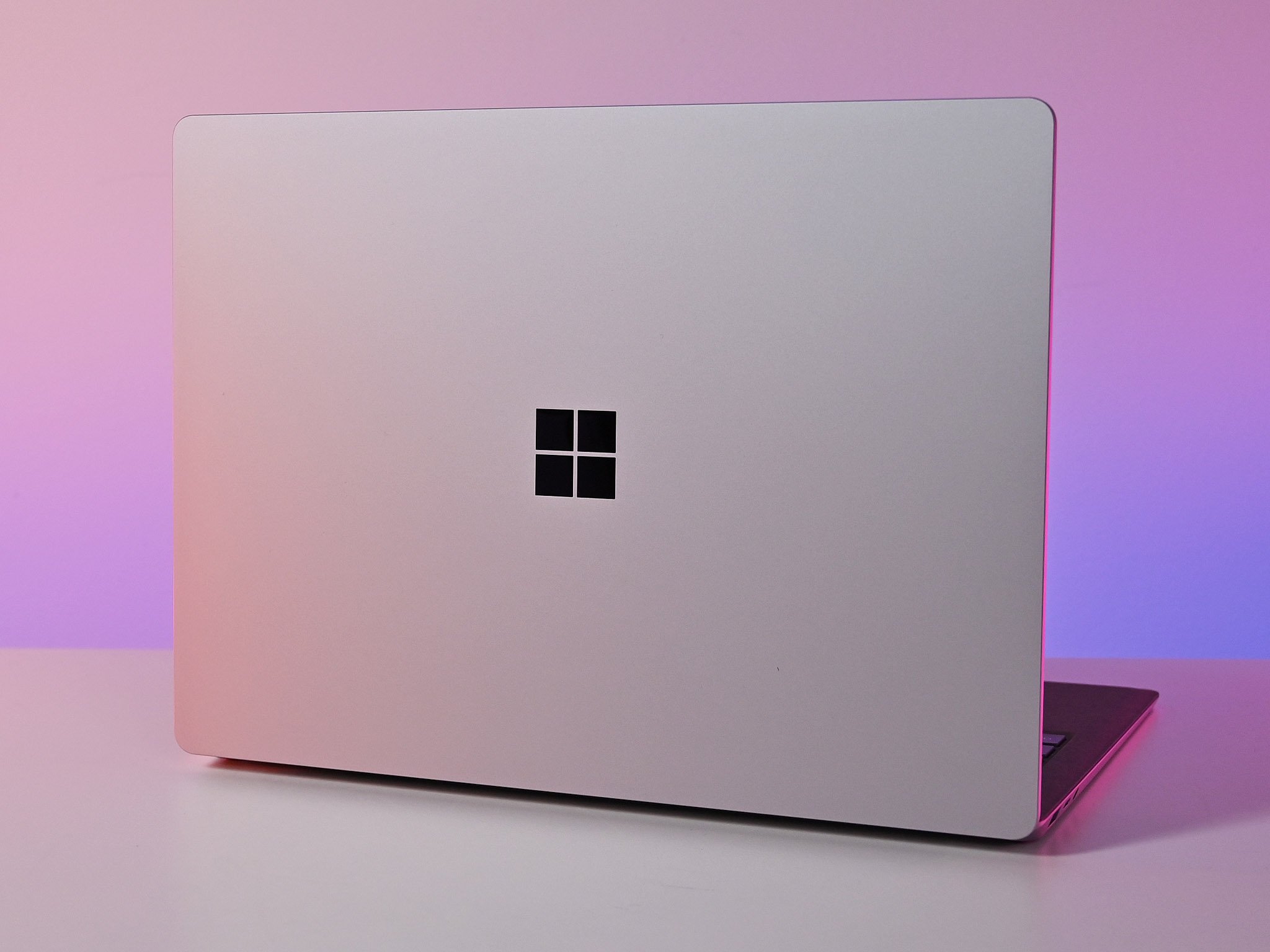
Like the Surface Pro 7, many of the adjustments to Surface Laptop 3 13.5 are on the inside, where they make a big difference. But there are also a few on the outside that are interesting. Those changes include:
- Intel 10th Gen 10nm processor.
- DDR4x RAM (low-power version of DDR4).
- Twenty percent larger trackpad, also quieter.
- Platinum Alcantara is now significantly darker.
- Intel Wi-Fi 6 AX201.
- Bluetooth 5.
- Faster SSD.
- Instant-On technology.
- USB Type-C 3.1 Gen 2.
- AC Fast Charge.
- Dual Studio Mics.
- Replaceable SSD.
- Hidden antenna lines.
For this review, I am using the Core i5 model with 8GB of RAM and 256GB of storage. The total price is $1,300 without tax, and we purchased it from the Microsoft Store.
| Category | Surface Laptop 3 (13-inch) | Surface Laptop 3 (15-inch) |
|---|---|---|
| Operating system | Windows 10 Home | Windows 10 Home |
| Display | 13.5-inch PixelSense, 3:2 aspect ratio, 2256x1504 (201 PPI) | 15-inch PixelSense, 3:2 aspect ratio, 2496x1664 (201 PPI) |
| Processor | Intel 10th Gen | AMD Ryzen 5 or Ryzen 7 custom CPU |
| GPU | Intel Iris | AMD Vega 9 AMD Vega 11 |
| Memory | 8GB or 16GB LPDDR4x | 8GB, 16GB, or 32GB LPDDR4 |
| Storage | 128GB, 256GB, 512GB, 1TB SSD (replaceable) | 128GB, 256GB, 512GB, 1TB SSD (replaceable) |
| Front camera | 720p | 720p |
| Security | Windows Hello face authentication camera, Firmware TPM | Windows Hello face authentication camera, Firmware TPM |
| Connectivity | Wi-Fi 6 Bluetooth 5.0 | Wi-Fi 5 Bluetooth 5.0 |
| Ports | 1x USB-C, 1x USB-A, 1x Surface Connect, 3.5 mm headphone jack | 1x USB-C, 1x USB-A, 1x Surface Connect, 3.5 mm headphone jack |
| Battery | Up to 11.5 hours Instant On | Up to 11.5 hours |
| Weight | Up to 2.79 lbs | Up to 3.4 lbs |
| Colors | Sandstone metal, Matte Black metal, Platinum w/ Alcantara, Cobalt Blue w/ Alcantara | Platinum metal, Matte Black metal |
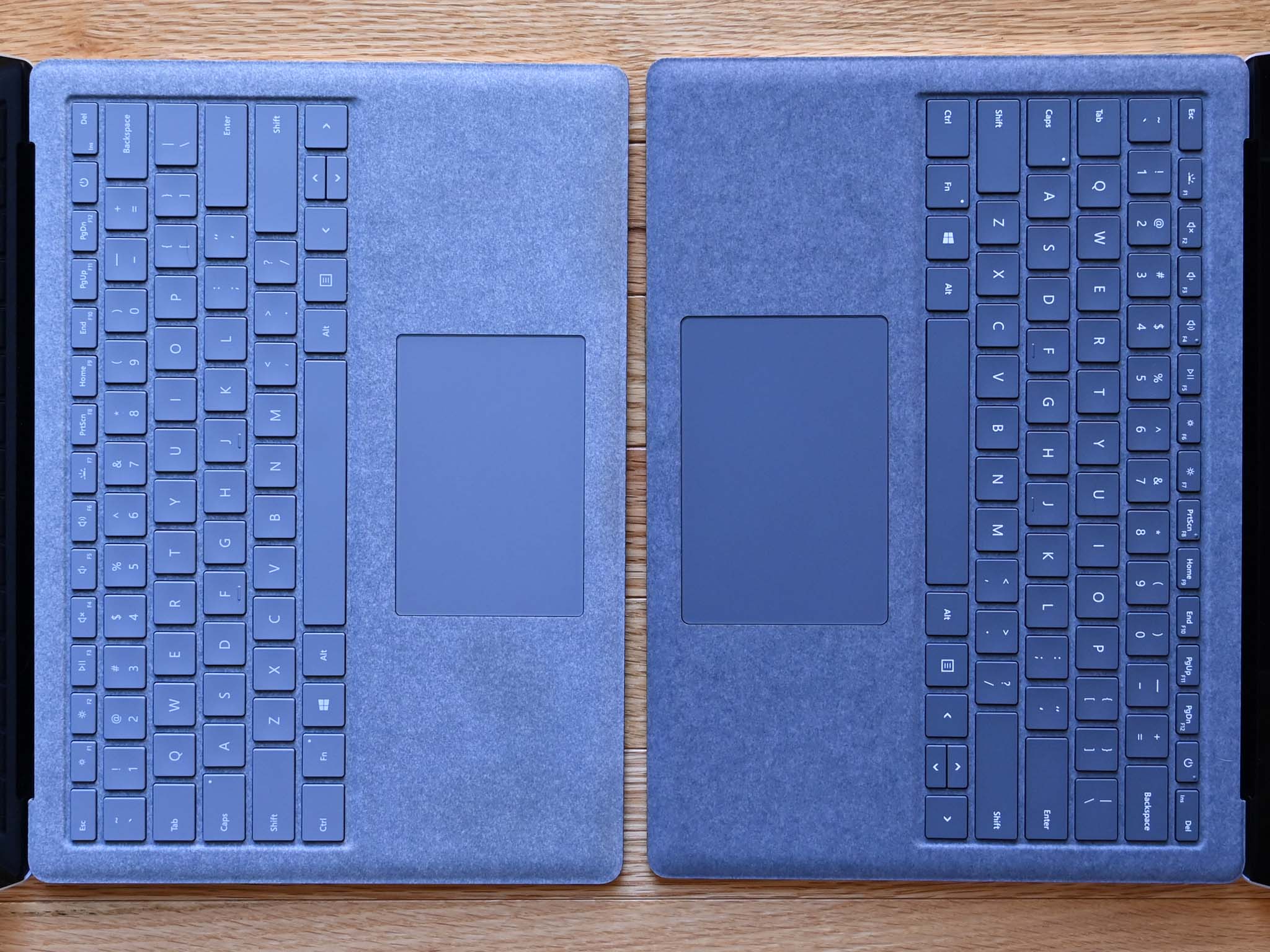
The Type-C 3.1 Gen 2 port replaces the Mini DisplayPort of previous Surface Laptops. It can transfer data, power two 4K displays at 60Hz (DisplayPort 1.4), and it supports Power Delivery (PD). PD lets users charge the Laptop 3 with a Type-C charger, including anything from a phone charger (slower charge) up to rarer 90W or 100W chargers with fast-charge support.
All the latest news, reviews, and guides for Windows and Xbox diehards.
Microsoft has now hidden the Wi-Fi and Bluetooth antenna lines, which were previously on the sides of the Surface Laptop. This change is minor and inconsequential, but it demonstrates how much Microsoft is concerned about the overall look of this laptop.
Finally, Instant-On is enormous. This advancement is part of Intel's Project Athena that focuses on mobility and performance. More on that in the benchmarks and performance section.
Art meets laptop
Surface Laptop 3 13.5 design
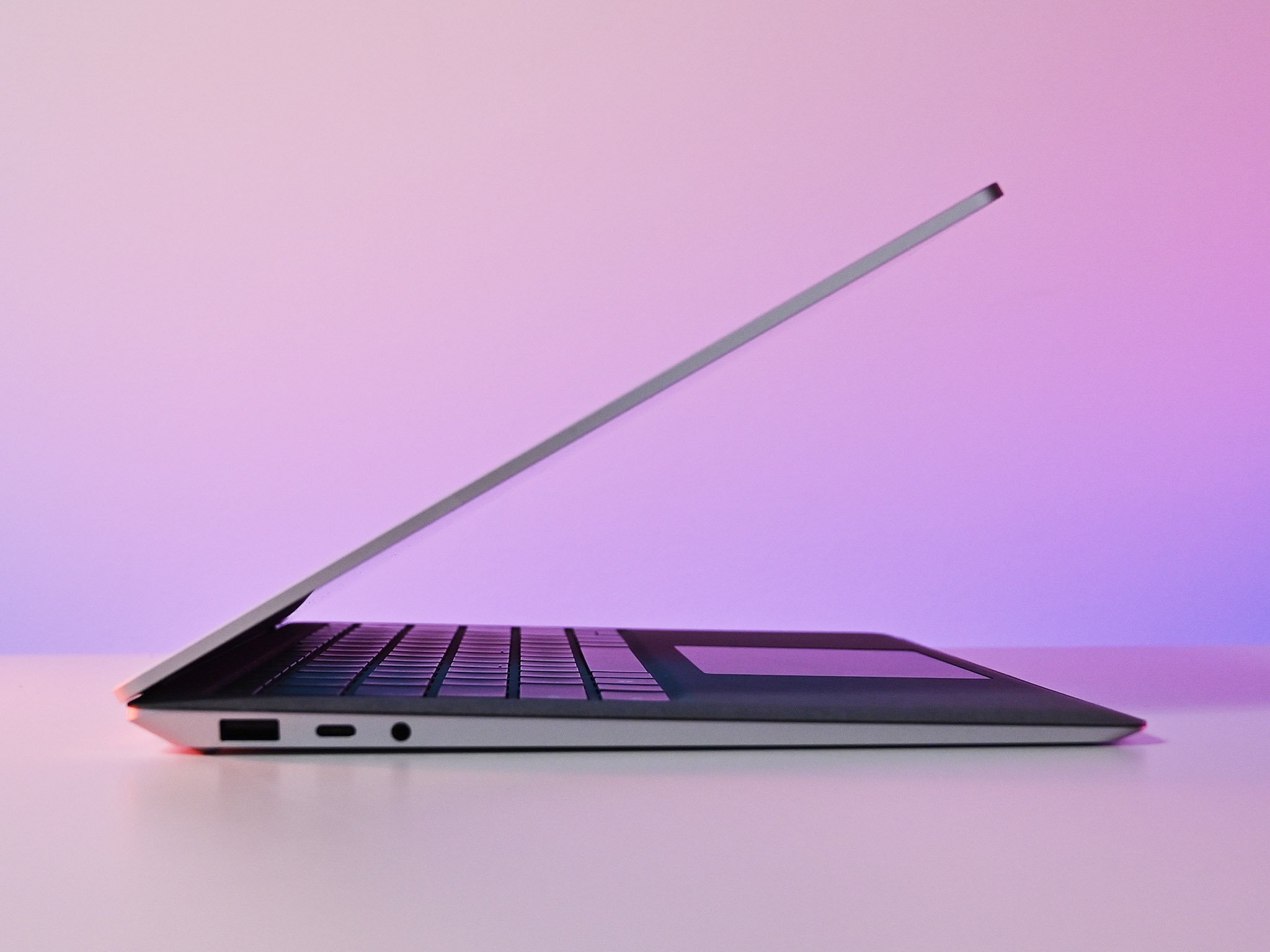
There are no significant chassis design changes this year to Surface Laptop 3 over the previous version. As noted above, Microsoft has hidden the Wi-Fi antenna lines, which gives a cleaner appearance.
Perhaps the most significant difference this year — and a welcomed one — is the option to buy the Surface Laptop 3 without the plush Alcantara keyboard deck. There are now four different color options, including cobalt (Alcantara), platinum (Alcantara), sandstone (aluminum), and matte black (aluminum). The downside is you are limited to specific color choices and deck materials — so if you wanted matte black with Alcantara, that's a no-go.
Alcantara fabric on Microsoft Surface PCs: Everything you need to know
Alcantara is a proprietary fabric that Microsoft has been using for some time on the Surface series. However, many customers found the idea of the material weird and off-putting. Likewise, there are plenty of cases where the fabric can get dirty over time and even stain if not occasionally wiped clean. To alleviate that, Microsoft has darkened the platinum Surface Laptop 3's Alcantara. Not only does it look better with higher contrast, but it stays cleaner looking, too. The outside platinum chassis, however, is the same as previous models.
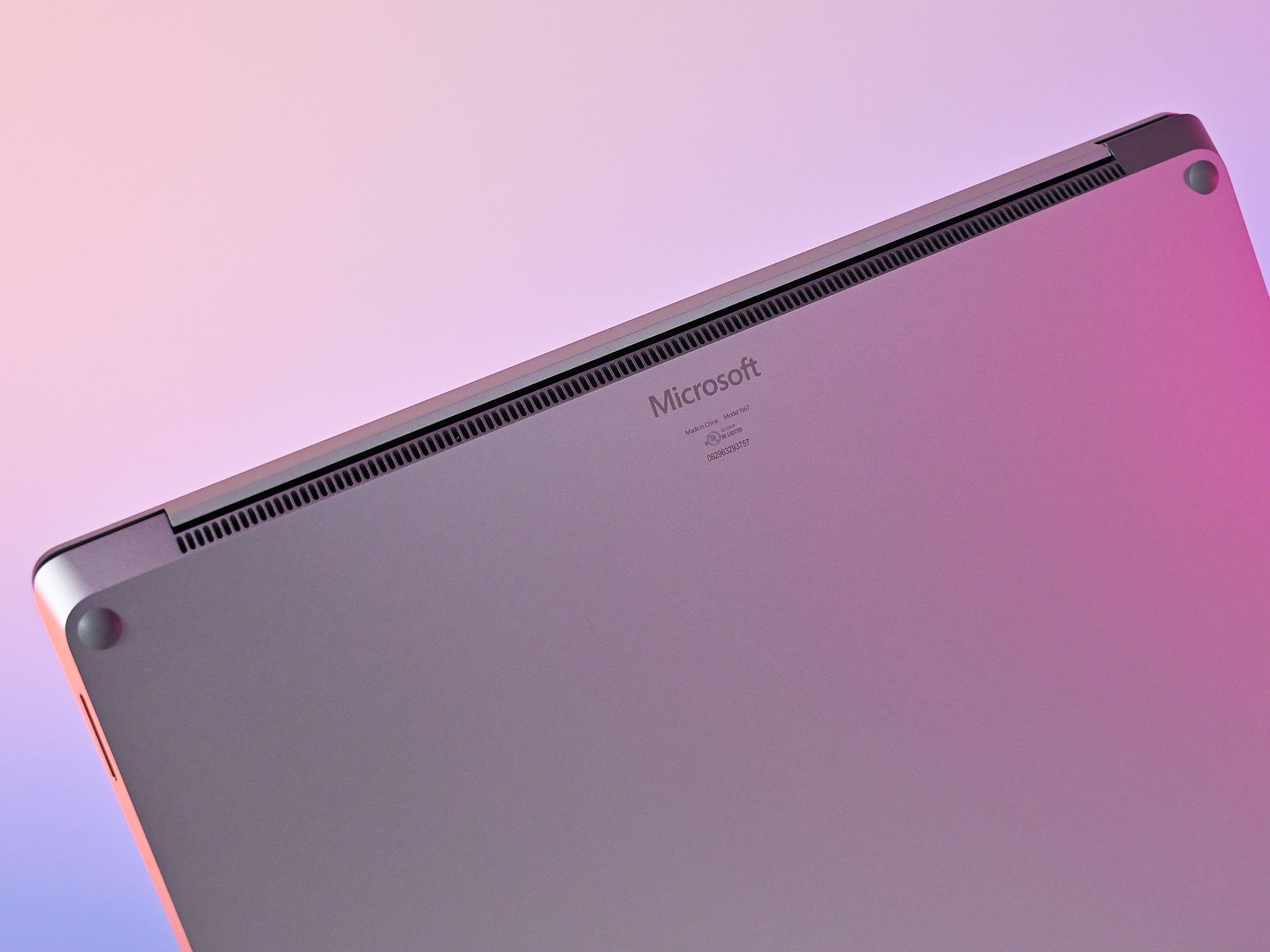
I am a massive fan of Alcantara on the Surface Laptop series. I consider it to be one of the defining differentiators from other laptops. It is soft, warm, and welcoming. I also do not have to worry about my watch band scratching the keyboard deck. That said, I understand the anxiety over it, and it is wise for Microsoft to offer versions without it. The new sandstone model is outstanding looking, and I came close to buying it, but in the end, I prefer the platinum model with Alcantara.
Microsoft has again created one of the most enjoyable laptops to use.
The chassis of the Surface Laptop 3 is perfectly symmetrical and about as minimalist as you can get. Even the speakers are hidden with no visible grills. The ports, one USB Type-A and another USB Type-C, are found on the left side with the headphone jack. On the right is the Surface Connect Port for charging.
The display opens with one hand, and when it closes, it slows down right before hitting the deck. It makes a subtle soft closing sound like how luxury car doors feel.
New this year is the ability to service the Surface Laptop to replace the SSD storage device. The process involves removing the four bottom feet, which house Torx screws. Once removed, the keyboard deck that's held in place with magnets simply lifts away. This ingenious design maintains the look of the Surface Laptop with no distinct entry points. I did not notice any negative consequences to this change as the chassis feels the same as the Surface Laptop 2.
iFixit exposes guts of Surface Laptop 3, comes away surprised
Although a bit tricky, owners can upgrade the SSD themselves. But for warranty concerns, owners are strongly encouraged to retain the original drive for service by Microsoft.
The Surface Laptop 3 13.5 is still without question the most beautiful looking and feeling Ultrabooks on the market. It's a testament to how form and function in a PC can find a perfect balance.
No HDR or anti-glare?
Surface Laptop 3 13.5 display and camera
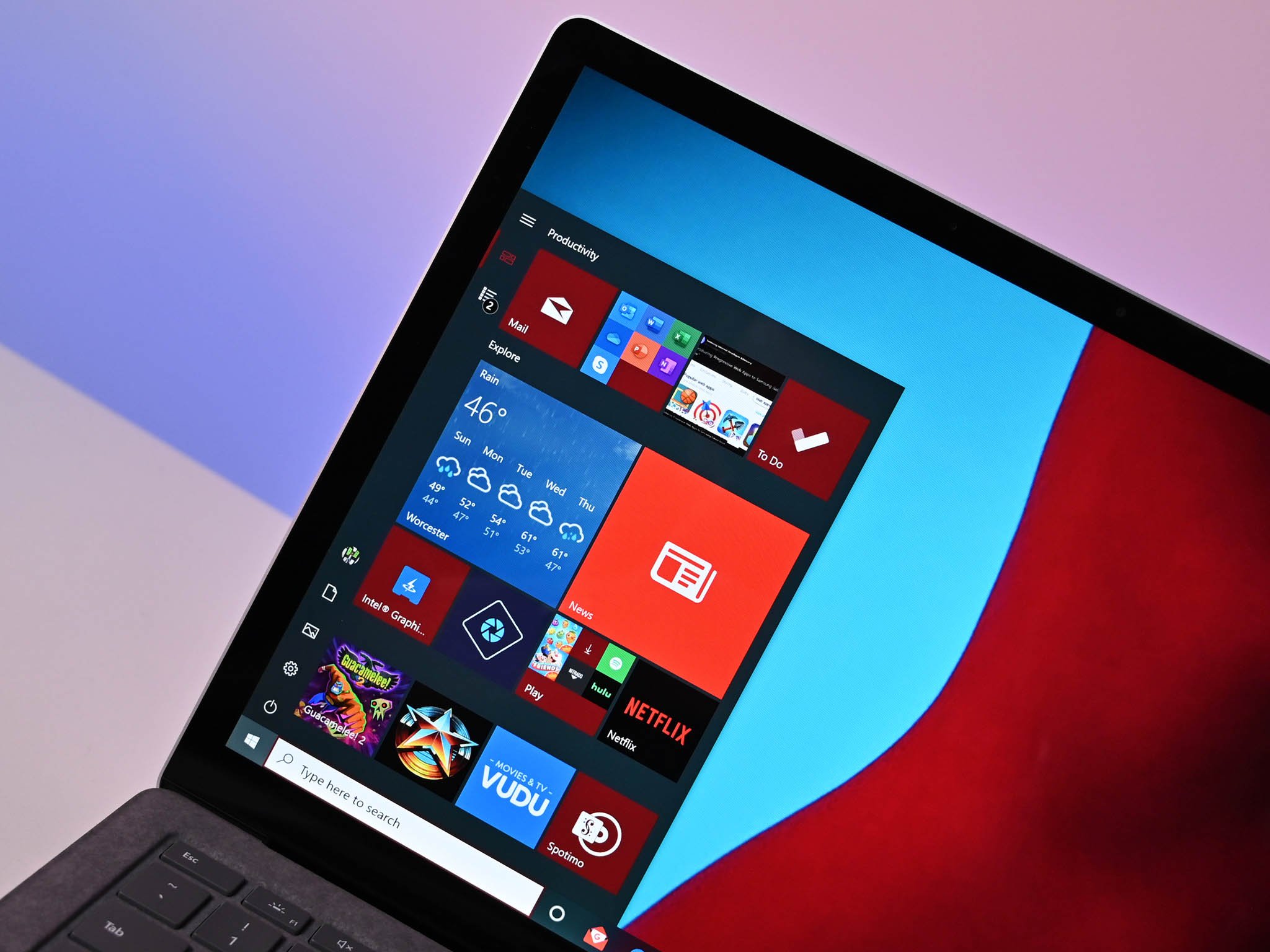
Microsoft has used an LCD-based 13.5-inch PixelSense Display with a 3:2 aspect ratio at 2256 x 1504 resolution for the Surface Laptop 3. The 201 pixel per inch (PPI) is lower than that of Surface Pro 7 (267 PPI) and Surface Book 2 (260 PPI), but the difference is negligible for daily use. The display is effectively the same as the 15-inch model in every way except slightly smaller in dimensions.
The bezels are relatively thin, and the glass is Gorilla Glass 3 with some oleophobic protection. That glass is edge to edge without any plastic for the bezels — another excellent design choice.
The Surface Laptop 3 supports inking with a Surface Pen, but the display does not open to 180 degrees, nor is there a place to keep the pen in transit. In a pinch, however, the pen is great for signing a document or making a quick note. Likewise, the Surface Dial is also supported with off-screen interaction.
For color accuracy, the screen delivers 97 percent sRGB, 72 percent AdobeRGB, and 75 percent DCI-P3. Those numbers are below that of the Surface Laptop 2 (99 percent sRGB and 81 percent AdobeRGB), which is unfortunate.
Peak brightness, when set to 100 percent, is just under 400 nits while turning the intensity to 0 percent results in a very dim 3.8 nits.
But at the end of the day, nothing feels like the Surface Laptop 3 13.5.
As I remarked in my Surface Pro 7 and Surface Laptop 3 15 reviews, Microsoft seems to be slipping in the display race compared to Lenovo, HP, and Dell. Things like support for HDR400 (500+ nits) and Dolby Vision are now standard features for premium Ultrabooks. Likewise, for new anti-glare tech, which keeps the benefits of a glossy display but cuts down on reflectivity, making it better for long hours of work. The same applies to the rise of OLED displays and even faster refresh rates than 60Hz.
Unfortunately, the Surface Laptop 3 13.5, Surface Laptop 3 15, and new Surface Pro 7 lack all of those new display technologies. The color accuracy and gamut are also not as good as other premium Ultrabooks. Windows 10 now supports wide-color gamut apps, HDR apps and games natively, but the Surface Laptop 3 does not.
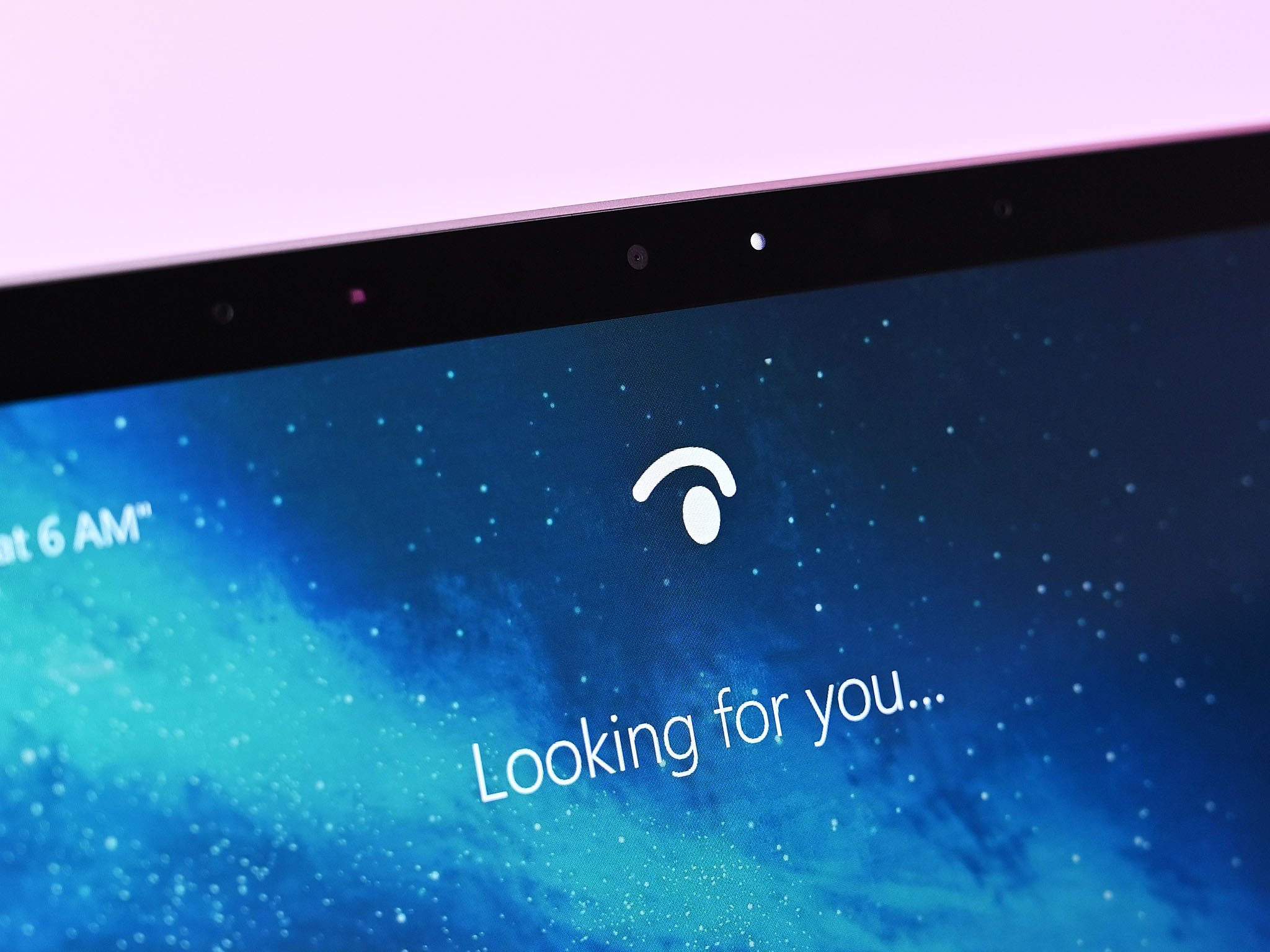
If you are unconcerned with such details, however, the Surface Laptop 3 13.5's display is still delightful. The contrast is excellent, and the brightness is excellent for indoor use.
Microsoft is continuing to use only a 720p front-facing camera instead of a full HD one like the Surface Pro series. That is likely due to how thin the display is on Surface Laptop. The camera is still better than average, though, and the new dual Studio Mics offer improved audio quality for Skype calls.
Nothing is better
Surface Laptop 3 13.5 keyboard and trackpad
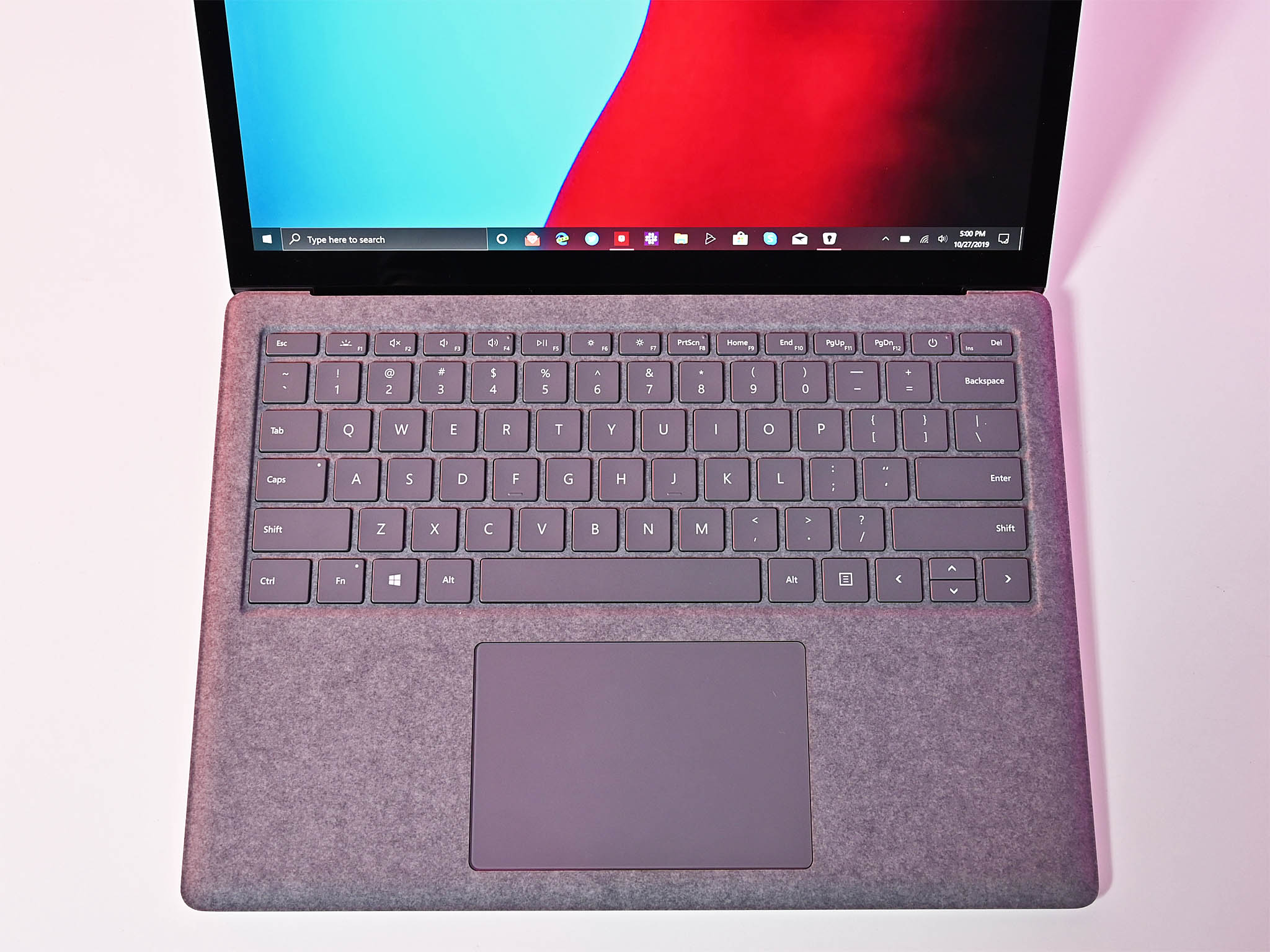
Microsoft has made minor changes to the keyboard and trackpad for Surface Laptop 3 13.5. Like last year's model, the company continues to make the keyboard and trackpad quieter. The effect stands in contrast with Apple's MacBook series, which due to the controversial butterfly switches, is exceptionally loud.
The key travel is still an ample 1.3mm, and typing is on the softer side of comparable laptops. I rate Surface Laptop 3 as one of the best typing experiences available on any computer. The keys have three-stage backlighting that's visible on all models except sandstone, which, due to its being a lighter color, has less contrast.
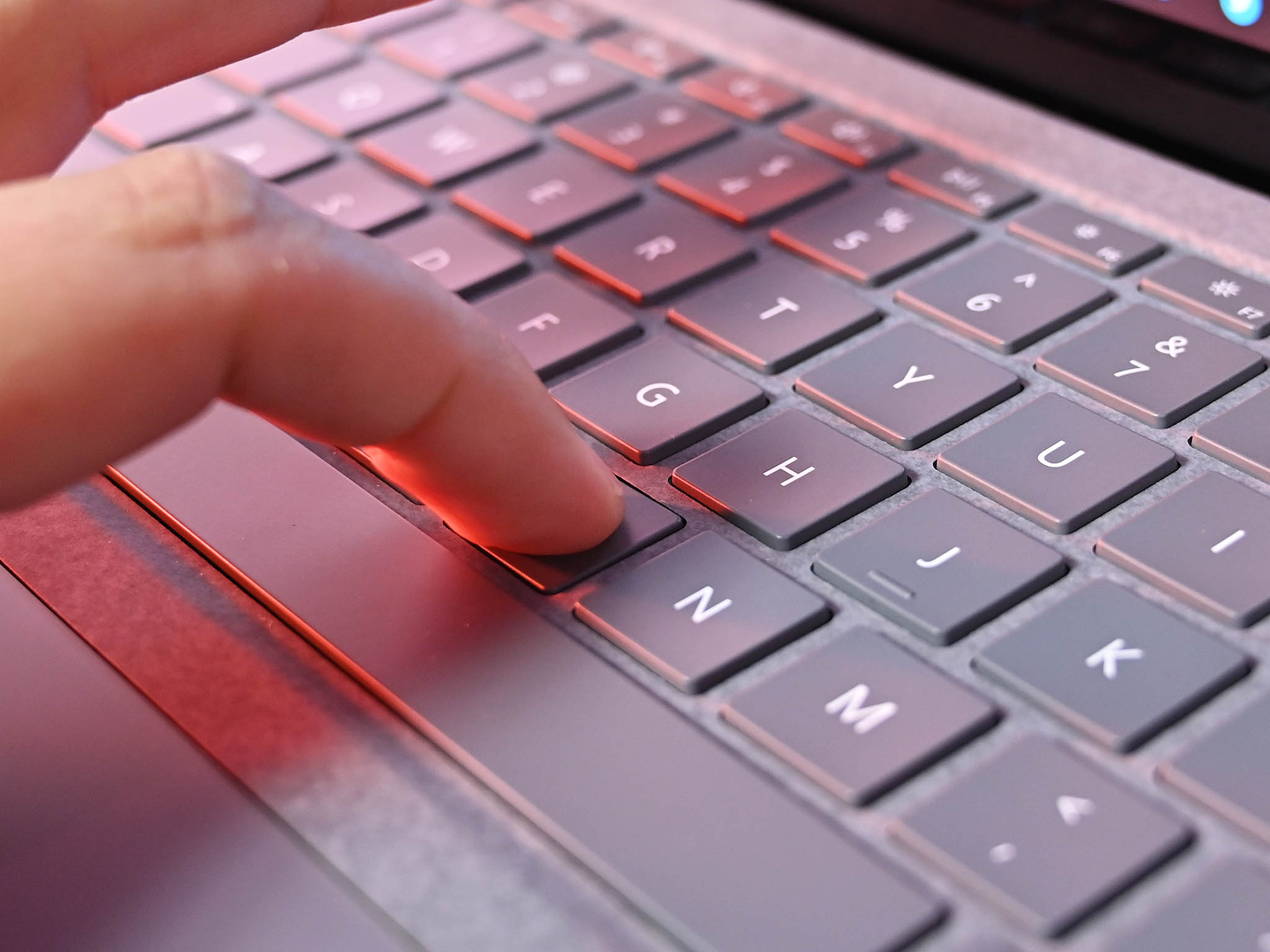
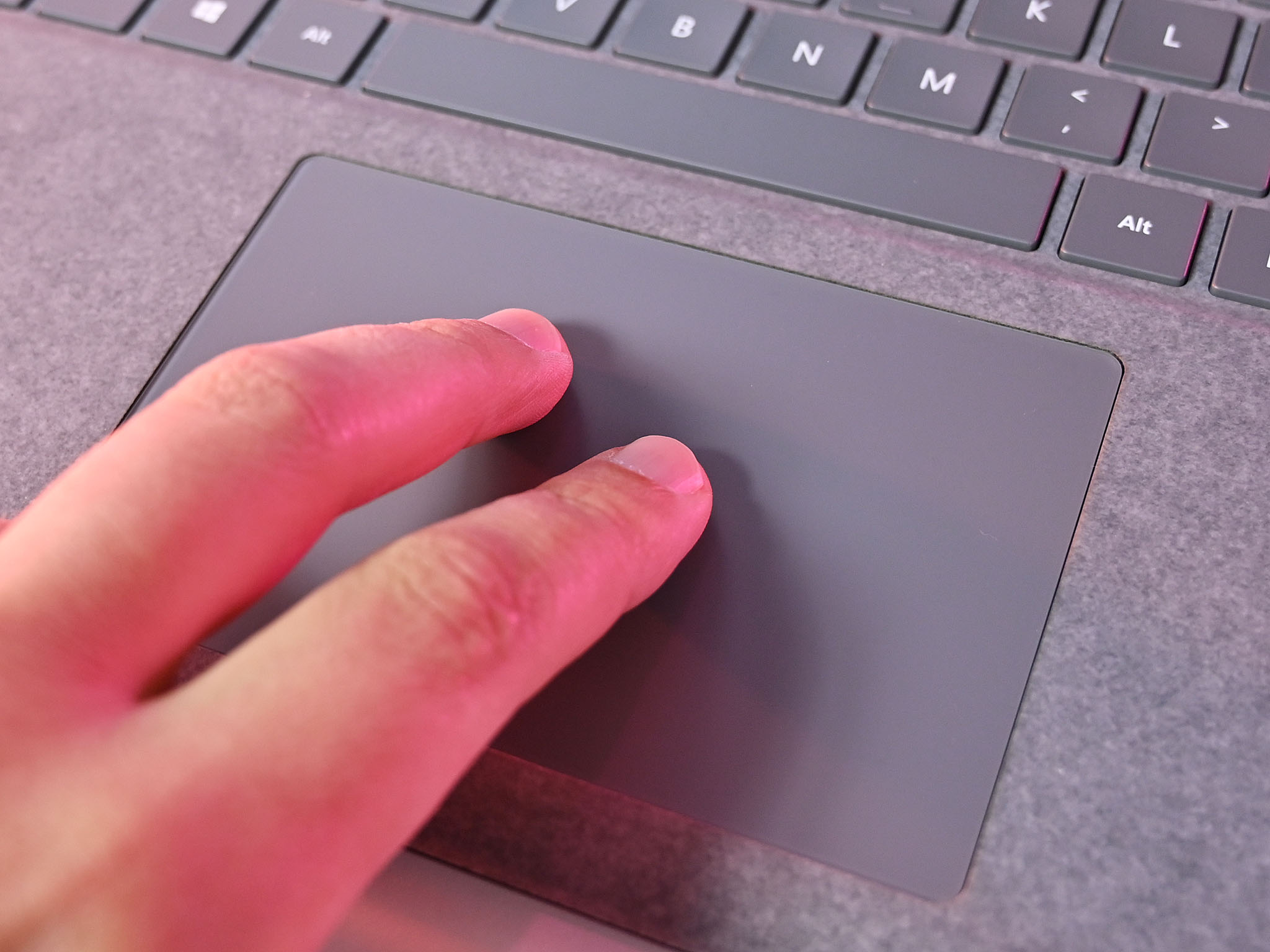
The improved trackpad is worth pointing out here. It is now 20 percent larger than last year, and it is very noticeable in photos and in using it. It is not as big as what Apple uses, but it is effectively perfect for this machine.
Besides size, though, Microsoft has also changed the trackpad click mechanism. It is still not as creative as Apple's Force Touch technology as this is mechanical, but it is a step in the right direction. The click is now significantly quieter. It is extremely satisfying to use with a softer, but not mushy feel.
This year's Surface Laptop 3 13.5 has the best track of any Windows 10 PC, period.
clean and clear
Surface Laptop 3 13.5 audio
The 15-inch version of Surface Laptop 3 has some muddied audio and even minor distortion when the volume is set above 60. Luckily, none of this applies to the Surface Laptop 3 13.5. Side by side the Surface Laptop 2 and the Surface Laptop 3 13.5 sounds the same; that is brilliant.
Audio for movies and music is bright with an extraordinarily rich ambiance. There was no speaker distortion. It is an engineering feat that Microsoft can pull off such satisfying audio with non-visible speaker grills. Sound instead comes through the keyboard, and it works surprisingly well.
It's unclear at this time if the audio of Surface Laptop 3 15 is worse because of the lack of Alcantara – which could act as a cloth speaker membrane — or it is for other unrelated reasons. Likewise, I have not tested the non-Alcantara version of the Surface Laptop 3 13.5 to verify this hypothesis.
Under the hood looks good
Surface Laptop 3 13.5 performance, battery, and heat
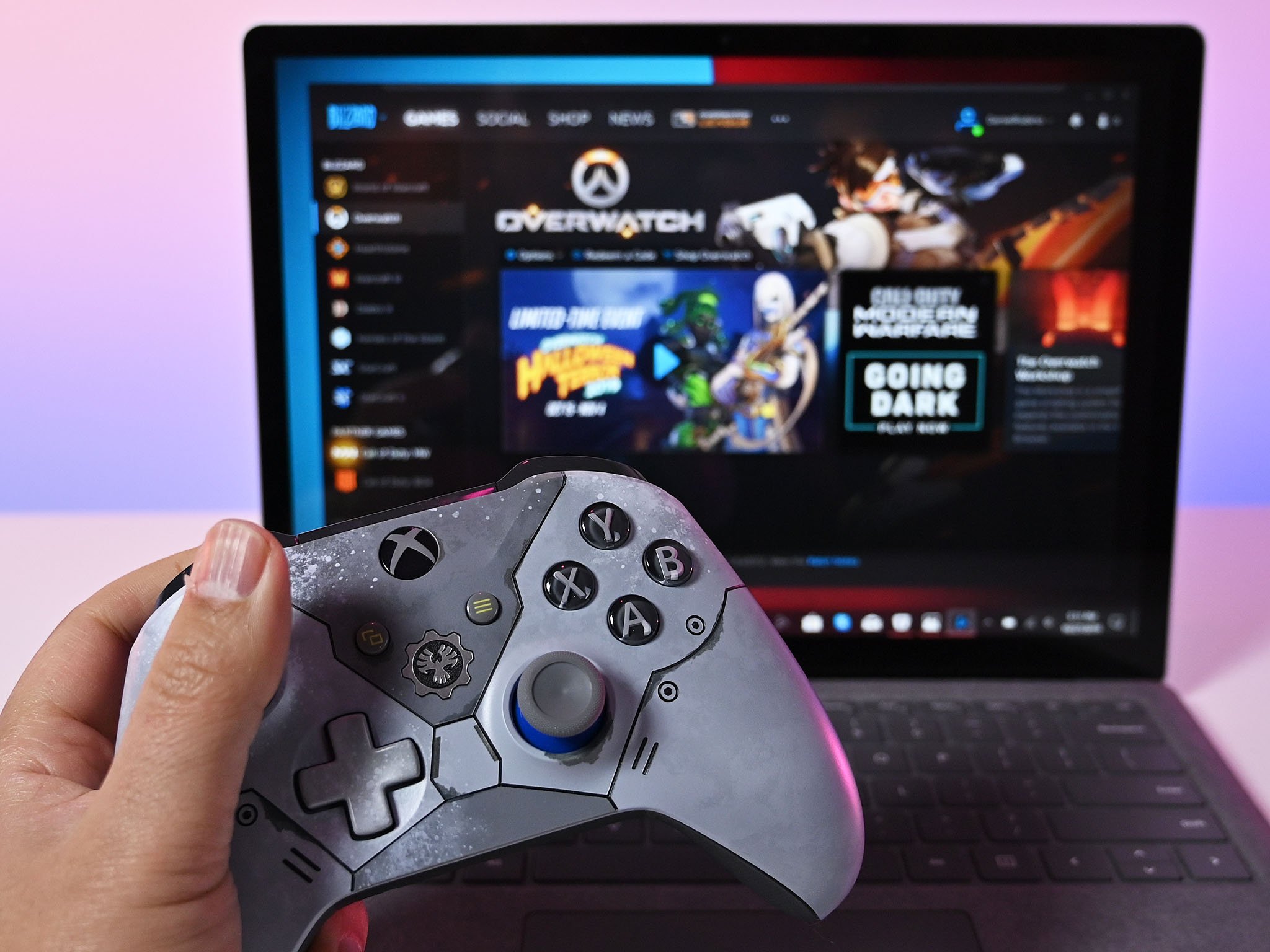
Like all Surface PCs before it, the Surface Laptop 3 13.5 is near the top, but it is not the fastest performer. Microsoft attempts to find a balance between heat, performance, and battery life resulting in overall better experience for the users, versus excelling in a single category.
The Intel Core i5-1035G7 processor is a slight change from the Core i5-1035G4 found in the Surface Pro 7. The G7 has a slightly higher base-clock of 1.20 GHz, versus 1.10 GHz found in the G4. The G7 also has a somewhat beefier GPU with 64 execution units versus 48 in the G4.
Microsoft is offering 8GB and 16GB options for RAM, but if you want 16GB, you need to step up to the pricier Core i7 model. RAM is the newer DDR4x, which while not faster than DDR4, it is more power-efficient.
Geekbench 5
Geekbench 5.0 (CPU) (Higher is better)
| Device | CPU | Single core | Multi core |
|---|---|---|---|
| Surface Laptop 3 13.5 | i5-1035G7 | 1,177 | 4,413 |
| Surface Laptop 3 15 | Ryzen 5 | 769 | 2,720 |
| Surface Laptop 3 15 | i7-1065G7 | 1,336 | 4,893 |
| Surface Laptop 2 | i5-8250U | 909 | 3,372 |
| Surface Pro 7 | i5-1035G4 | 1,191 | 4,441 |
| Surface Pro 6 | i7-8650U | 1,113 | 3,519 |
| Surface Pro 6 | i5-8250U | 904 | 3,440 |
| Dell XPS 13 2-in-1 7390 | i7-1065G7 | 1,209 | 3,571 |
| Dell XPS 15 7590 | i9-9980HK | 1,176 | 7,624 |
Geekbench 4
Geekbench 4.0 (CPU) (higher is better)
| Device | CPU | Single core | Multi core |
|---|---|---|---|
| Surface Laptop 3 13.5 | i5-1035G7 | 5,265 | 17,345 |
| Surface Laptop 3 15 | Ryzen 5 | 3,985 | 12,079 |
| Surface Laptop 3 15 | i7-1065G7 | 5,727 | 19,593 |
| Surface Laptop 2 | i5-8250U | 4,203 | 13,233 |
| Surface Laptop | i5-7200U | 3,725 | 7,523 |
| Surface Pro 7 | i5-1035G4 | 5,245 | 17,350 |
| Surface Pro 6 | i7-8650U | 5,037 | 13,864 |
| Surface Pro 6 | i5-8250U | 4,287 | 14,031 |
| Surface Pro 5 | i5-7300U | 4,302 | 8,482 |
| Surface Pro 5 | i7-7660U | 4,513 | 9,346 |
| Surface Pro 4 | i5-6300U | 3,319 | 6,950 |
| HP Spectre x360 15 | i7-9750H | 4,968 | 18,790 |
| HP Spectre x360 15 | i7-8565U | 5,246 | 16,272 |
| Dell XPS 13 2-in-1 7390 | i7-1065G7 | 5,459 | 19,097 |
| Razer Blade Stealth | i7-8565U | 5,139 | 16,339 |
| Dell Latitude 7400 2-in-1 | i7-8665U | 5,469 | 15,800 |
Cinebench
Cinebench (R20) (higher is better)
| Device | CPU | Range |
|---|---|---|
| Surface Laptop 3 13.5 | i5-1035G7 | 1,584 to 1,606 |
| Surface Laptop 3 15 | Ryzen 5 | 1,523 to 1,610 |
| Surface Laptop 3 15 | i7-1065G7 | 1,703 to 1,745 |
| Surface Pro 7 | i5-1035G4 | 1,201 to 1,479 |
Running Cinebench four times in a row, the scores show the following ranges. Typically, the results drop on successive runs due to thermal constraints on the processor. Surface Pro 7 is particularly susceptible to a rapid range in scores because of its limited thermal envelope. The Surface Laptop 3 13.5-inch handled thermals quite well without a steep drop in performance between runs.
GPU
Geekbench 5.0 OpenCL (higher is better)
| Device | GPU | Compute score |
|---|---|---|
| Surface Laptop 3 13.5 | Iris Plus | 9,811 |
| Surface Laptop 3 15 | Vega 9 | 11,334 |
| Surface Laptop 3 15 | Iris Plus | 10,497 |
| Surface Laptop 2 | Intel UHD 620 | 5,514 |
| Surface Pro 7 | Iris Plus | 7,613 |
| Surface Pro 6 | Intel UHD 620 | 5,396 |
| Dell XPS 13 2-in-1 7390 | Iris Plus | 10,406 |
| HP Spectre x360 15 | GTX 1050Ti | 82,576 |
| HP Spectre x360 15 | MX150 | 47,284 |
| Dell Precision 3541 | NVIDIA Quadro P620 | 12,469 |
PCMark
PCMark 10
| Device | CPU | Score |
|---|---|---|
| Surface Laptop 3 13.5 | Intel i5 | 3,643 |
| Surface Laptop 3 15 | AMD Ryzen 5 | 4,006 |
| Surface Laptop 3 15 | Intel i7 | 4,604 |
| Surface Laptop 2 | Intel i5 | 2,748 |
| Surface Pro 7 i5 | Intel i5 | 3,992 |
| Surface Pro 6 i7 | Intel i7 | 3,644 |
| Surface Pro 6 i5 | Intel i5 | 3,501 |
| Dell XPS 13 2-in-1 7390 | Intel i7 | 4,427 |
| Dell XPS 15 7590 | Intel i9 | 5,521 |
| Dell Inspiron 13 7390 2-in-1 | Intel i5 | 3,764 |
SSD
CrystalDiskMark (Higher is better)
| Device | Read | Write |
|---|---|---|
| Surface Laptop 3 13.5 | 2,338 MB/s | 1,583 MB/s |
| Surface Laptop 3 15 | 2,028 MB/s | 806 MB/s |
| Surface Laptop 2 | 1,509 MB/s | 811 MB/s |
| Surface Laptop | 486 MB/s | 244 MB/s |
| Surface Pro 7 | 2,040 MB/s | 809 MB/s |
| Surface Pro 6 | 1,632 MB/s | 814 MB/s |
| Surface Pro 5 | 847MB/s | 801 MB/s |
| Surface Book | 1,018 MB/s | 967 MB/s |
| Dell XPS 13 2-in-1 7390 | 2,400 MB/s | 1,228 MB/s |
| Huawei MateBook X Pro (new) | 3,416 MB/s | 2,779 MB/s |
| HP Spectre x360 13t | 3,085 MB/s | 1,182 MB/s |
| LG gram 14 2-in-1 | 558.1 MB/s | 523.1 MB/s |
.
Like the Surface Pro 7, it is safe to say that this year's Core i5 model performs as well or slightly better than last year's Intel 8th Gen Core i7. That is a substantial boost in performance and quite remarkable from previous iterations of Intel's 8th Gen platform.
Compared to the AMD Ryzen 5, which is positioned against Intel's Core i5, Intel wins handily. Specifically, the Ryzen 5 in the 15-inch is still slightly behind Intel's 8th Gen Core i5, and significantly behind Intel's 10th Gen Core i5.
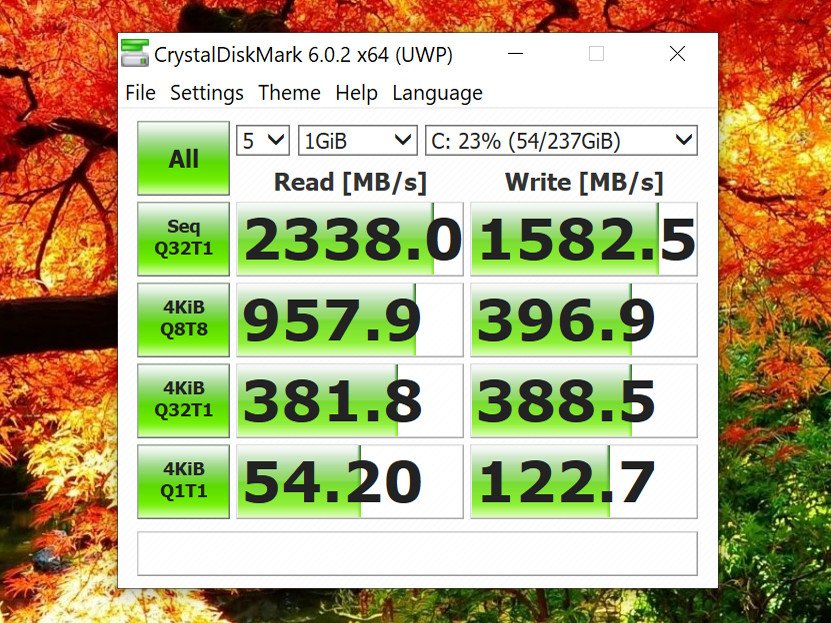
Intel's Iris Plus graphics also bring a substantial boost over Intel UHD 620 though this is still clearly in Ultrabook range, not gaming or video editing. Where AMD shines in the 15-inch model is in the GPU with the Vega 9. That GPU slightly outperforms Iris Plus. You can see this effect in PCMark 10, which balances CPU and GPU usage for a comprehensive overall score. But because so much software — including video playback or Adobe software — is optimized for Intel, it makes the point moot.
Cinebench (R20) delivers a score of 1,584-1,606 in multiple sequential runs for the Core i5-1035G7. The AMD Surface Laptop 3 with Ryzen 5 garnered similar results between 1,539 and 1,610.
Although by no means a gaming laptop, the Surface Laptop 3 13.5 — even with a Core i5 and 8GB of RAM — can hold its own. Arcade games like Guacamelee! 2 played just fine, of course. Even the popular first-person shooter Overwatch can run without issue. Setting the game's graphics quality to low with a resolution of 1600 x 1200, I was able to average between 60 to 70 frames-per-second (FPS). During major battles, that rate dropped to 54 FPS but was still playable. That said, if gaming is a priority, consider the Core i7 model with 16GB of RAM instead (or something more suited like the new Razer Blade Stealth).
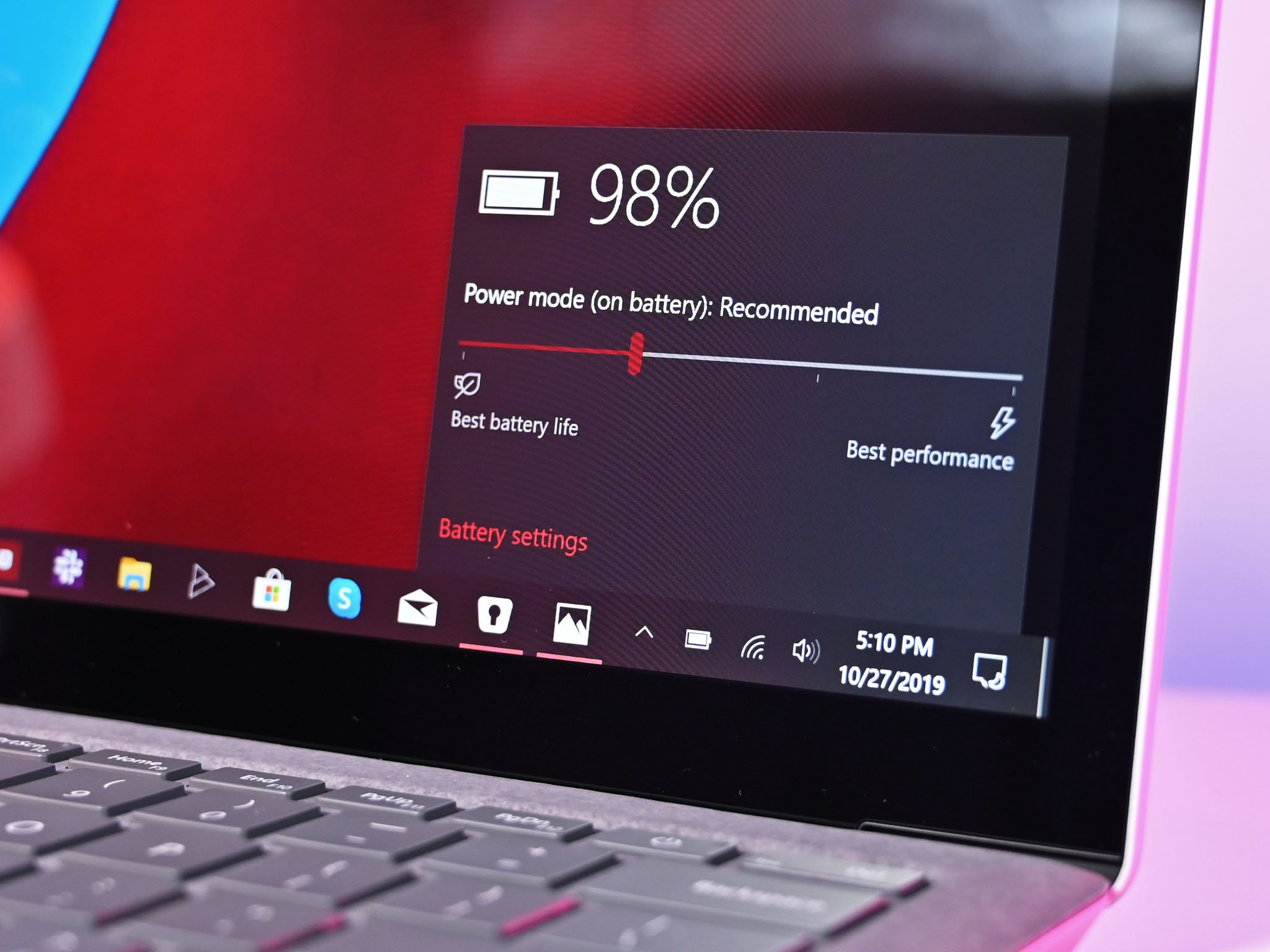
PCMark 10's battery rundown test, dubbed "Modern Office" resulted in the Surface Laptop 3 getting 9 hours and 15 minutes with 19 percent battery left. That was with the display brightness at about 150 nits. By comparison, the Surface Laptop 2 with the same screen brightness was just about 9 hours on the same benchmark.
Real-world usage pegs the Surface Laptop 3 13.5 closer to 7 to 8 hours of use depending on GPU activity and display brightness.
Another significant change, which I wrote about extensively, is the improved Instant On feature. Previously, the Surface Laptop would hibernate after just a few hours in standby. The result, when turned on, would be a slower resume (~15 to 20 seconds) before the Windows login screen would appear. Now, the Laptop 3 13.5 turns on nearly instantly — as fast as you can open the lid — and log you in with Windows Hello. This behavior is like how Apple MacBooks and iPads behave, and it improves the user experience by a lot if you frequently open and close your laptop.
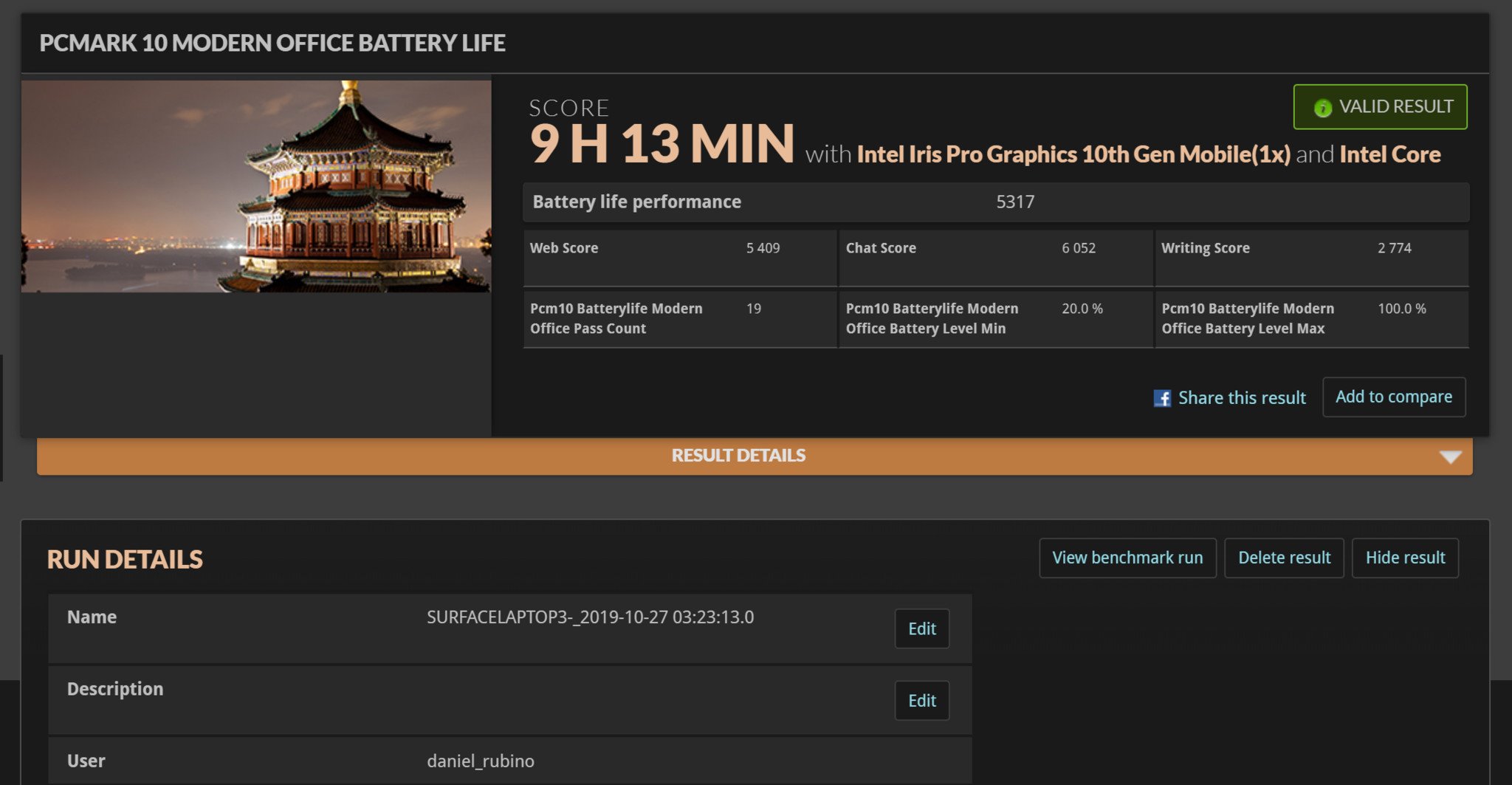
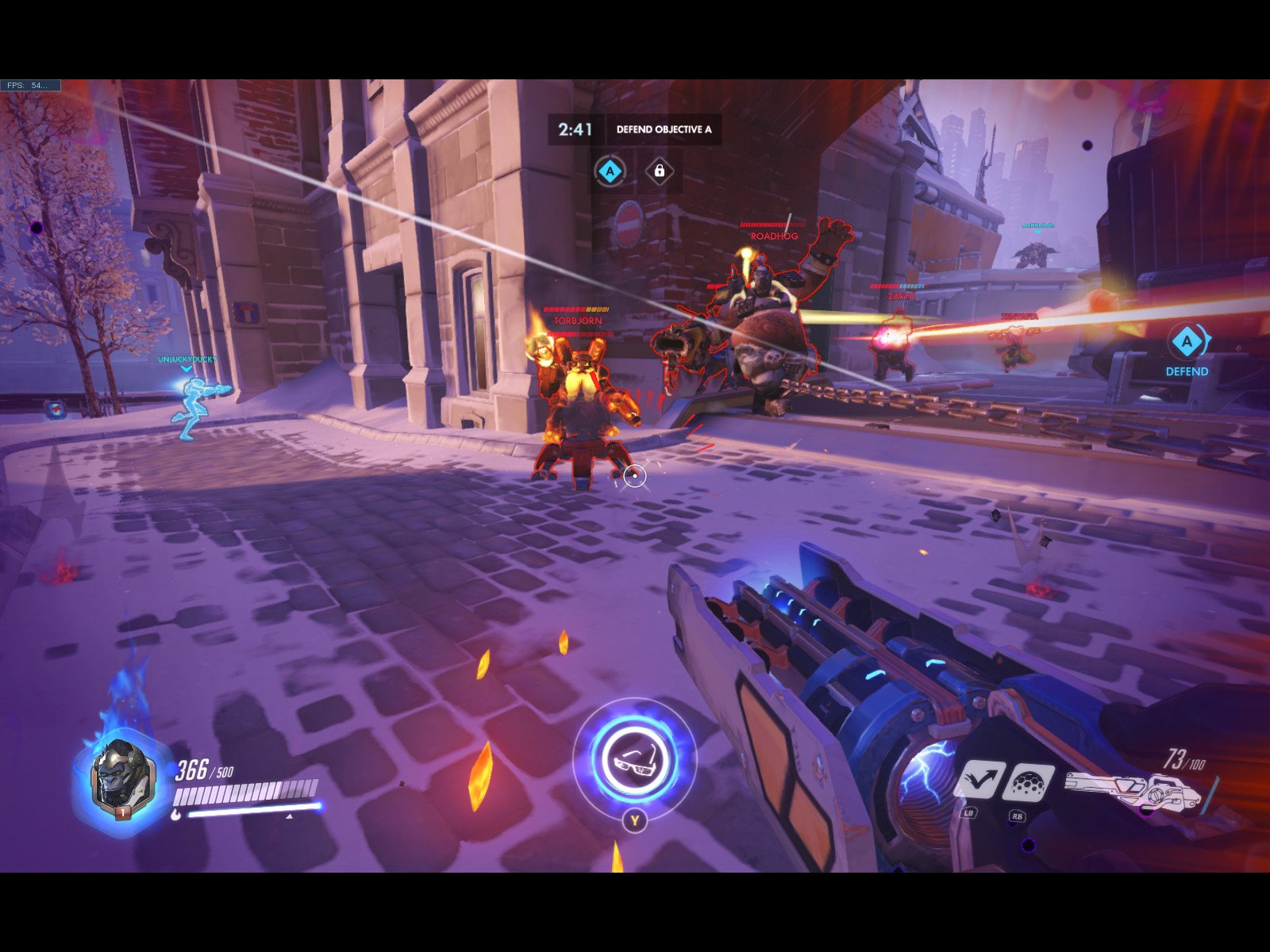
The Surface Laptop 3 13.5 and Surface Laptop 3 15-inch Business Edition seem to be shipping with The Toshiba BG4 (ball grid) SSD for storage, while others have an older SK Hynix card. Ball-grid storage is a smaller form factor that has been around for a while, but the Toshiba BG4 is brand new. It was announced at CES 2019 but only became available this quarter, earning strong reviews. Sourcing different SSDs is quite common for manufacturers. Still, at least, in this case, the Toshiba gives a significant boost in performance, especially in write speeds, over the SK Hynix (both are 256 GB). As to which version your laptop comes with, it seems to be random.

Wi-Fi is also interesting. Microsoft is continuing to shift away from Marvel for wireless to Intel across its lineup (except for AMD Surface Laptop 3 15, which is Qualcomm Atheros). By going with Intel, Microsoft can utilize next-gen Wi-Fi 6 (802.11 ax) and Bluetooth 5, which help with connectivity and power improvements.
Wi-Fi performed well, but there seems to be a new bug whereby Wi-Fi download speeds significantly drop when resuming from sleep (same applies to Surface Pro 7). This likely related to the new Instant On feature, and while not wholly disruptive, it can be frustrating.
Thermals and heat are excellent on the Core i5 model. While installing large applications or playing games, you can hear the fan. It is not a high-pitched sound, but rather more of a whoosh effect. For regular usage though like Office, productivity, email, web browsing, even light photo editing, the fans are rarely enabled, especially if on battery.
The competition
Alternatives to the Surface Laptop 3
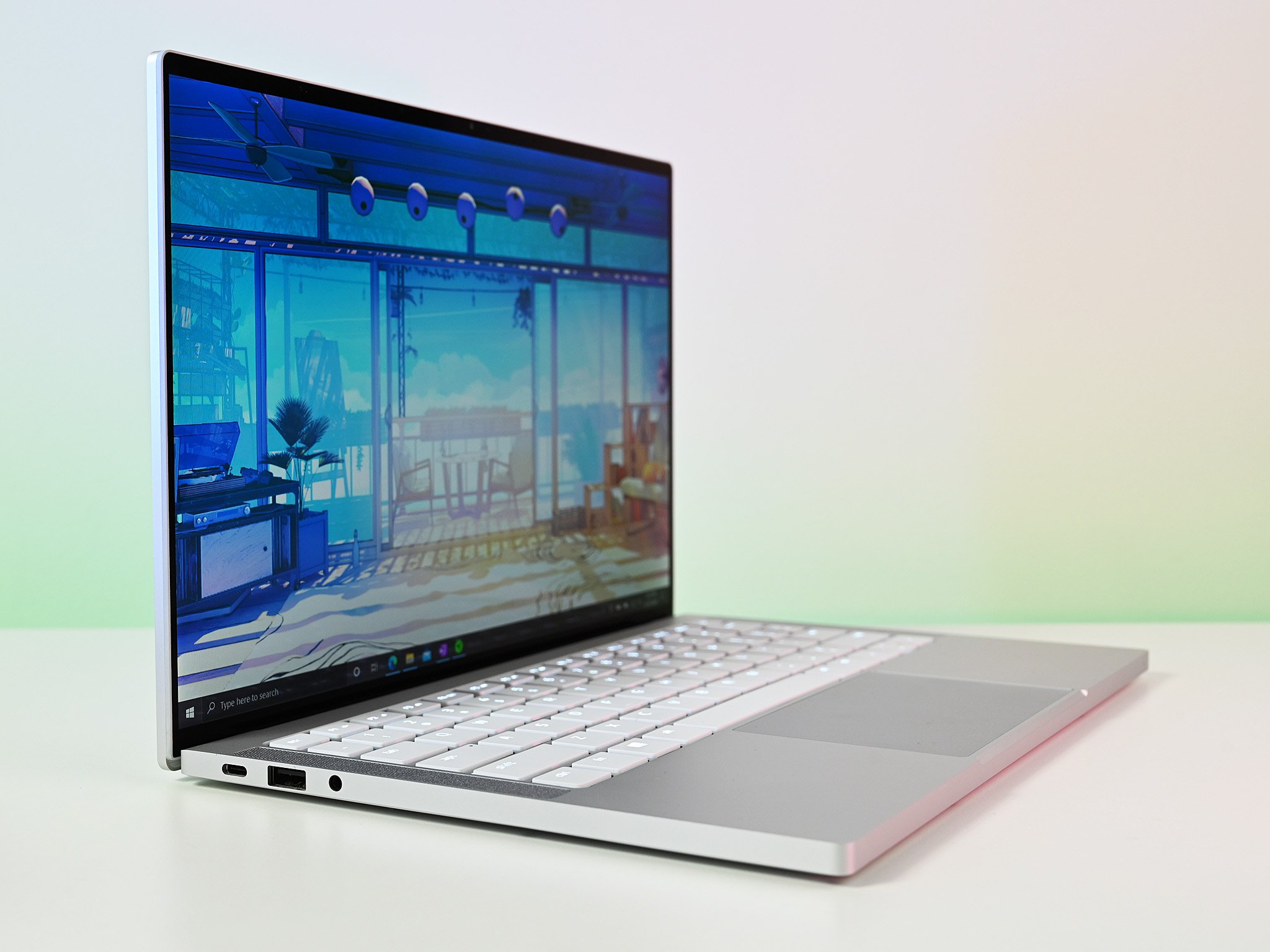
Other alternatives that aren't Microsoft-made include the Razer Book 13 and Dell XPS 13. Both laptops feature an excellent Ultrabook design, with the latest specs and premium-price tags to match. Razer Book 13 starts at $1,199 and the Dell XPS 13 starts at $899.
Microsoft made a great laptop with the Surface Laptop 3, which is likely why they didn't change much with its successor. The Surface Laptop 4 is now available, and it makes meaningful changes where it counts. The external chassis and design is the same, but Microsoft has swapped out the older 10th-gen Intel and Ryzen 3000 AMD series chips in favor of the more modern and more powerful Intel 11th-generation and AMD Ryzen 4000 series chips instead.
This provides the Surface Laptop 4 with better battery, better processor performance, and a more powerful GPU in both Intel and Ryzen models. The Surface Lapto 4 also comes in a new Ice Blue color, but the biggest difference is that you can now get the AMD chips in the 13.5-inch variant, starting at $999. Unless you're on a budget and you can get a good discount on the Surface Laptop 3, we think the Surface Laptop 4 is the one to go for if you're looking for a new Surface Laptop.
Should you buy?
Bottom line on Microsoft's Surface Laptop 3 13.5-inch
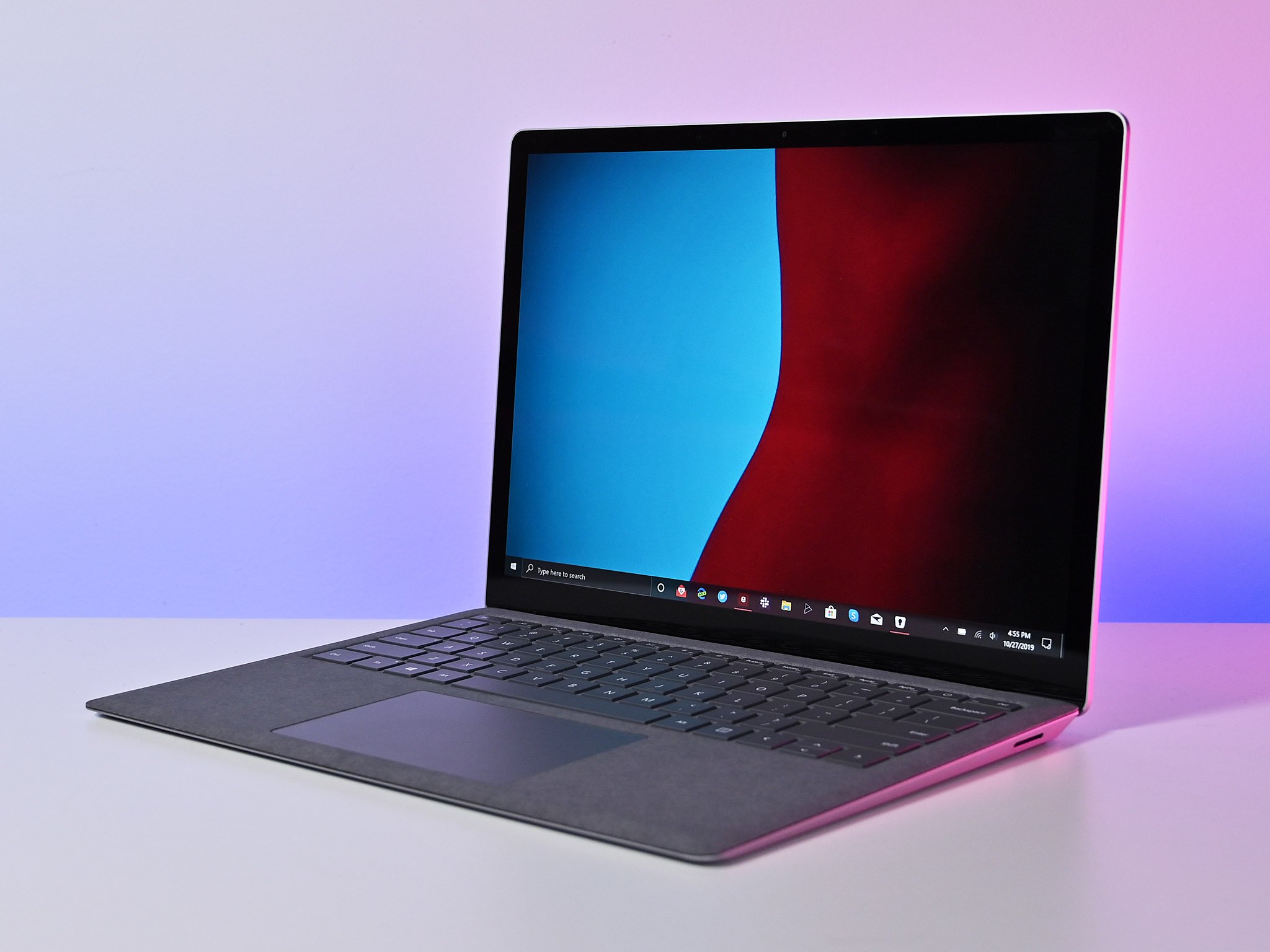
The Surface Laptop 3 follows a similar trajectory of Surface Pro 7. While only modest changes, they are significant ones that add up to one of the most enjoyable laptops to use. I'm also happy Microsoft's foray with AMD did not extend to the 13.5-inch model. This is not AMD's time yet.
The Surface Laptop 3 13.5 is still without question the nicest looking Ultrabook on the market. It's a testament to how form and function can find a perfect balance.
Take, for instance, the new fast charge ability. When using the Surface Connect or a 65-watt Type-C charger, the laptop can gain around 70 percent of the battery back in an hour. Even just 15 minutes during lunch could give you an extra couple of hours of usage. Or the ability to now use a Type-C portable battery. There's also Instant On, which, while sounding trivial, lets you get in and out of your work faster than ever – it makes you want to use the laptop more.
The dramatic increase in performance is welcomed. As is the option to not have Alcantara, which may convince some skeptics to now join the Surface family. Toss in some of the best fundamentals like the finest typing, tracking, audio, and that 3:2 aspect ratio, and you start to understand why this is such a lovely laptop.
I could lament the lack of Thunderbolt 3, which has no technical reason for not being here. But most users will benefit from the universal aspect of Type-C, which can power dual 4K displays at 60Hz, handle data, Type-C hubs, and Power Delivery (PD).
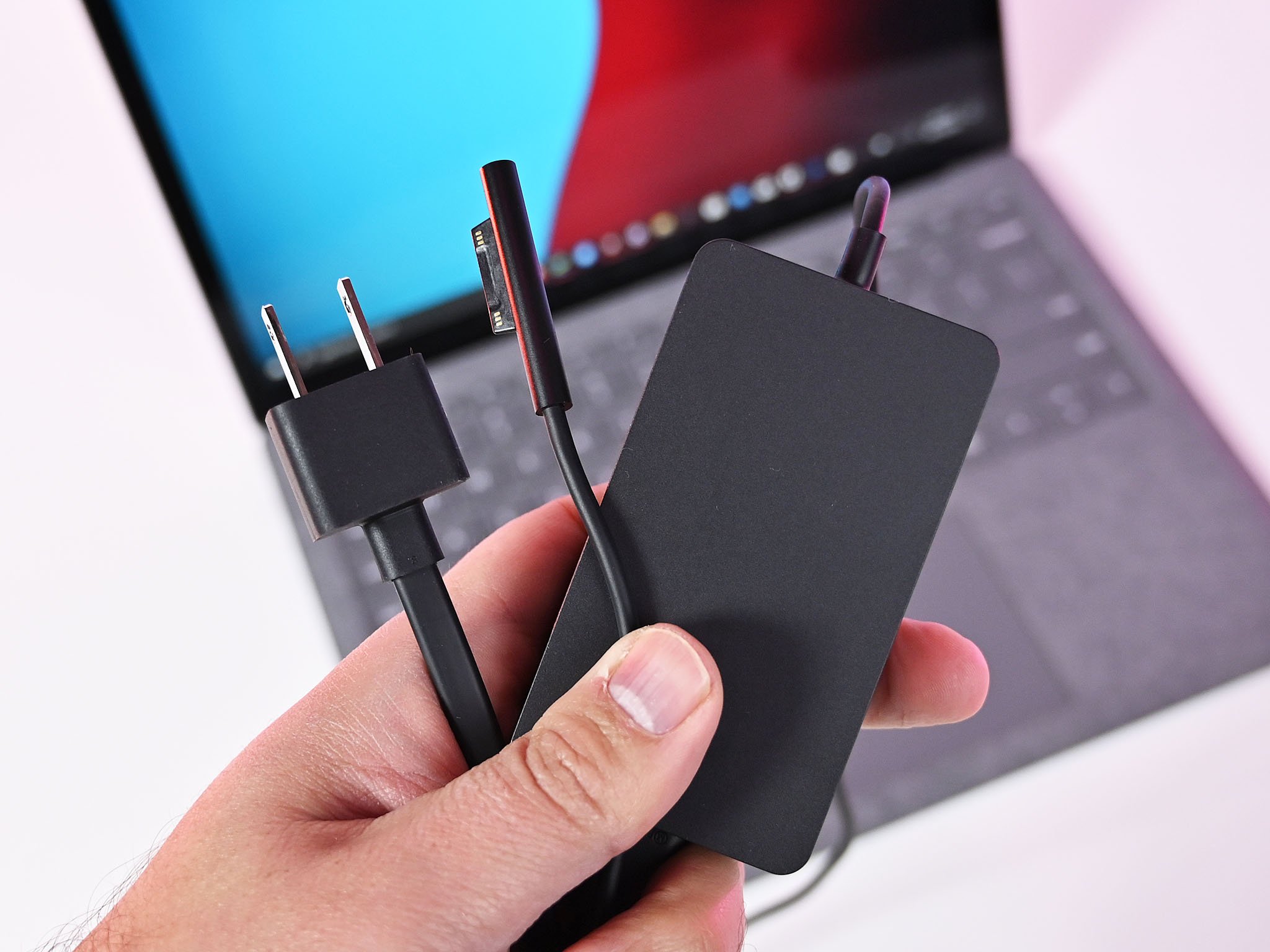
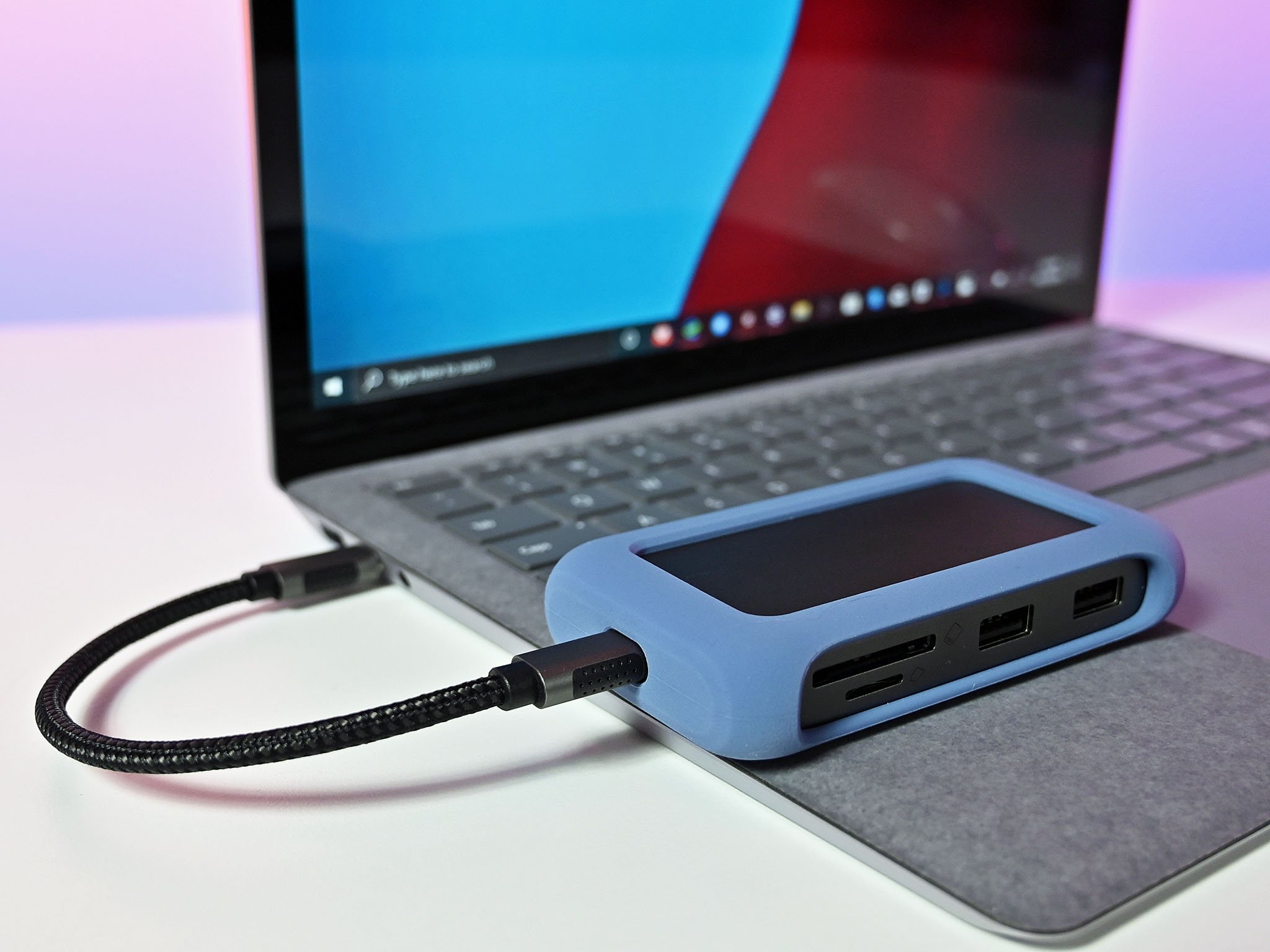
I do think for most users, the Core i5 model with 8GB of RAM is adequate ($1,300). Users could opt for the cheaper $1,000 model with just 128GB of storage, and if they feel comfortable opening the laptop, they can add up to 1TB to save money (RAM is not upgradeable). The Core i7 model is ideal for those who plan to make this their primary PC, developers, or those who can justify the 16GB of RAM. The Core i7 model is an extra $300 starting at $1,600.
However, like the Surface Laptop 2 — and unlike the Surface Pro 7 — there is a lot of competition in this space. Dell has the excellent XPS 13 7390 or XPS 13 2-in-1 7390. HP's refreshed Spectre x360 13 looks remarkable. Lenovo has the killer Yoga C940. Many of these are not just laptops, but full convertibles with many more options, HDR OLED displays, 4G LTE, and more all for lower price points. There are many compelling reasons to buy one of those over the Surface Laptop 3.
But at the end of the day, nothing feels like the Surface Laptop 3 13.5. It is not the fastest laptop, does not get the best battery life, but it is, arguably, the most satisfying to use. It is, as I said last year, "a perfect blend of art and technology." That is still true. It's just now even better.
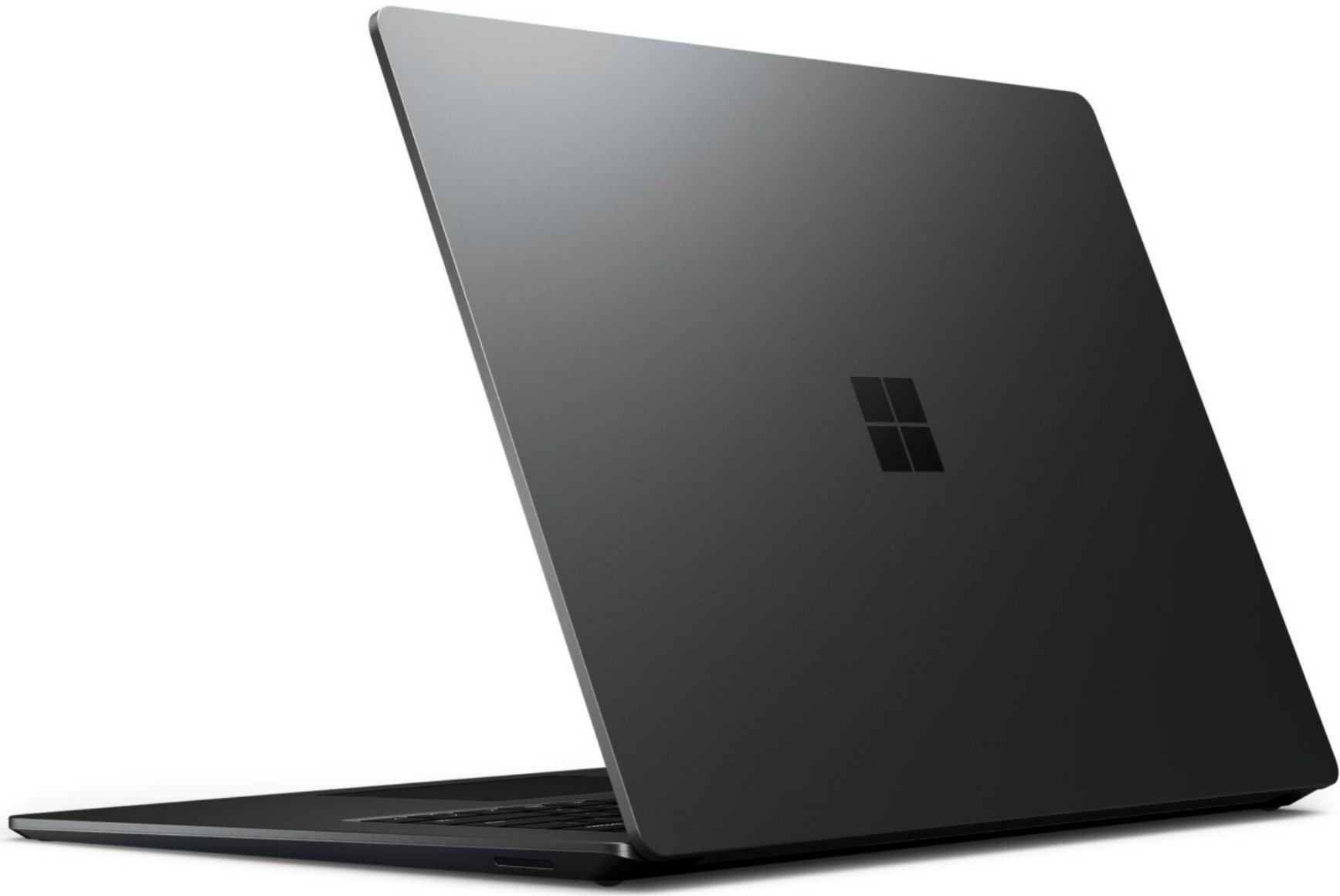
Small changes add up fast
With the addition of USB Type-C, Wi-Fi 6, and Intel 10th Gen processors, the Surface Laptop 3 13.5 delivers a solid follow up to the Surface Laptop 2. Between the optional Alcantara, ability to get the laptop serviced, including SSD upgrades, Instant On, and the hugely improved trackpad, Microsoft has again created one of the most enjoyable laptops to use. While it won't win out for value, it does maintain the crown for user satisfaction. And that's priceless.

Daniel Rubino is the Editor-in-chief of Windows Central. He is also the head reviewer, podcast co-host, and analyst. He has been covering Microsoft since 2007 when this site was called WMExperts (and later Windows Phone Central). His interests include Windows, laptops, next-gen computing, and wearable tech. He has reviewed laptops for over 10 years and is particularly fond of 2-in-1 convertibles, Arm64 processors, new form factors, and thin-and-light PCs. Before all this tech stuff, he worked on a Ph.D. in linguistics, performed polysomnographs in NYC, and was a motion-picture operator for 17 years.

